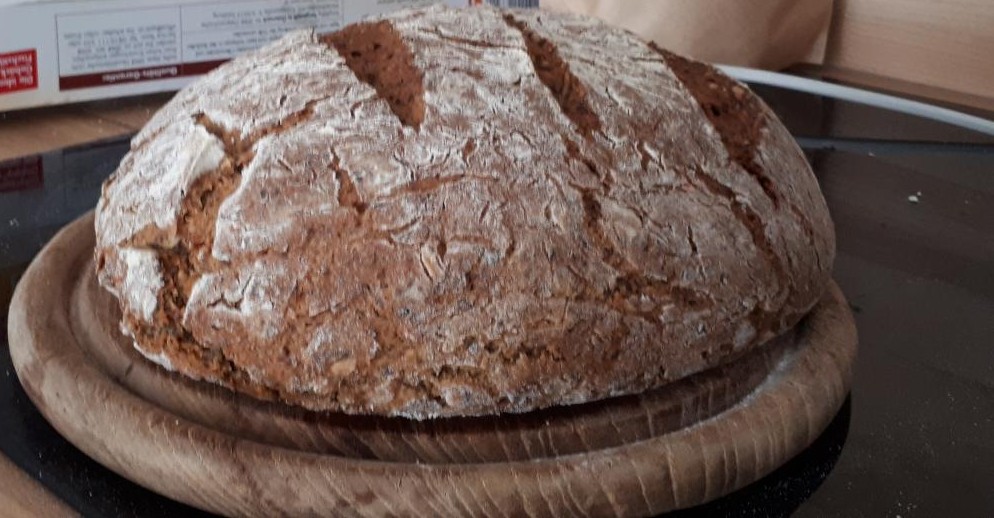Rice is the seed of the grass species Oryza sativa (Asian rice) or less commonly Oryza glaberrima (African rice). The name wild rice is usually used for species of the genera Zizania and Porteresia, both wild and domesticated, although the term may also be used for primitive or uncultivated varieties of Oryza.
As a cereal grain, domesticated rice is the most widely consumed staple food for over half of the world's human population, especially in Asia and Africa. It is the agricultural commodity with the third-highest worldwide production, after sugarcane and maize.Since sizable portions of sugarcane and maize crops are used for purposes other than human consumption, rice is the most important food crop with regard to human nutrition and caloric intake, providing more than one-fifth of the calories consumed worldwide by humans. There are many varieties of rice and culinary preferences tend to vary regionally.
History of rice cultivation
Oryza sativa was domesticated from the wild grass Oryza rufipogon roughly 10,000–14,000 years ago. The two main subspecies of rice – indica (prevalent in tropical regions) and japonica (prevalent in the subtropical and temperate regions of East Asia) – are not believed to have been derived from independent domestication events. Another cultivated species, O. glaberrima, was domesticated much later in West Africa.
Recent genetic evidence show that all forms of Asian rice, both indica and japonica, come from a single domestication event that occurred 8,200–13,500 years ago in the Pearl River valley region of China.
In China, extensive archeological evidence points to the middle Yangtze and upper Huai rivers as the two earliest places of O. sativa cultivation in the country. Rice and farming implements dating back at least 8,000 years have been found. Cultivation spread down these rivers over the following 2,000 years.
Puddling the soil – turning it to mud to break it down and prevent too much water percolating away – and transplanting seedlings were likely refined in China. Both operations became integral parts of rice farming and remain widely practiced to this day. With the development of puddling and transplanting, rice became truly domesticated.
Movement to western India and south to Sri Lanka was also accomplished very early. Rice was a major crop in Sri Lanka as early as 1000 B.C. The crop may well have been introduced to Greece and the neighboring areas of the Mediterranean by returning members of Alexander the Great’s expedition to India around 344-324 B.C. From a center in Greece and Sicily, rice spread gradually throughout southern Europe and to a few locations in northern Africa.
As a result of Europe’s Age of Exploration, new lands to the west became available for exploitation. Rice cultivation was introduced to the New World by early European settlers. The Portuguese carried it to Brazil and the Spanish introduced its cultivation to several locations in Central and South America. The first record for North America dates from 1685, when the crop was produced on the coastal lowlands and islands of what is now South Carolina. It is thought that slaves from West Africa who were transported to the Carolinas in the mid-18th century introduced the complex agricultural technology needed to grow rice. Their labor then insured a flourishing rice industry. By the 20th century, rice was produced in California’s Sacramento Valley. The introduction into California corresponded almost exactly with the timing of the first successful crop in Australia’s New South Wales.
Today, the majority of all rice produced comes from China, India, Indonesia, Pakistan, Bangladesh, Vietnam, Thailand, Myanmar, Philippines, and Japan. Asian farmers still account for 92% of the world's total rice production.
Best Cereal
Resources for Organizing your workplace/community :sabo:
Resources for Palestine :palestine-heart:
Buy coffee and learn more about the Zapatistas in Chiapas here :EZLN:
Here are some resourses on Prison Abolition :brick-police:
Foundations of Leninism :USSR:
:lenin-shining: :unity: :kropotkin-shining:
Anarchism and Other Essays :ancom:
Remember, sort by new you :LIB:
Follow the Hexbear twitter account :comrade-birdie:
THEORY; it’s good for what ails you (all kinds of tendencies inside!) :RIchard-D-Wolff:
Come listen to music with your fellow Hexbears in Cy.tube :og-hex-bear:
Queer stuff? Come talk in the queer megathread! ! :sicko-queer:
Monthly Neurodiverse Megathread and Monthly ND Venting Thread :Care-Comrade:


Tfw your friends do a cute "what drives you to be creative" quiz and they all get shit like "hope" and "wonder" and you get this
Damn that's an oof if ever there was one.
deleted by creator
damn, that means you're pretty profound, DANCE! :duck-dance:
deleted by creator